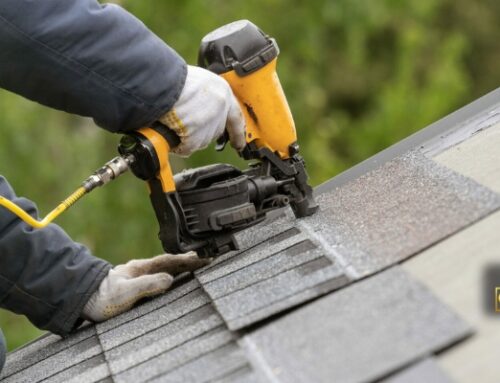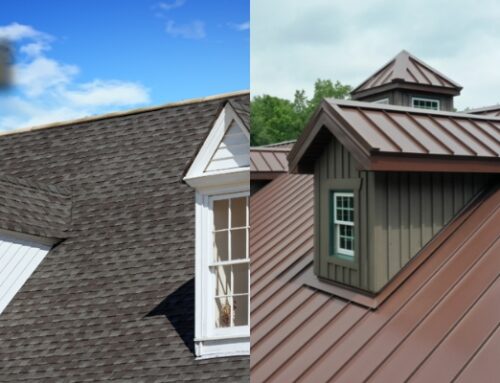Your house may have an excellent roof, and you rarely think about it until something goes wrong. Roof inspection is something that should be conducted on a regular basis to avoid the emergence of minor issues that can be corrected at an affordable price. With proper roof maintenance and acting on warning signs, your roof can withstand a sunny summer day or heavy winter storms for a very long time.
In this article, we will talk about warning signs and preventive measures that every homeowner needs to take to safeguard their roofs.
Early Warning Signs to Look Out For
Your roof works day and night to protect your home against the sun, wind, rain, and snow. Like every other system, stress can cause it to be inefficient. However, you can only detect these signs during an inspection.
The sooner you are able to detect these signs, the less you will have to pay in repairs or, in fact, a replacement. These are some of the red flags to look out for.
1. Curling, Cracked, or Missing Shingles
Have you ever taken a glance at your roof and found it a bit shabby? Curled, cracked, or missing shingles are not just about looks; they are a warning. Curling is usually an indication that the shingles are either aging or absorbing moisture.
Cracks are indicators of sun damage or wind exposure, whereas missing shingles leave gaping holes open to leaks and rot. These are some of the indicators that your roof is at the end of its useful life and may soon collapse during a storm.
What to do: Hire a pro to inspect the roof and determine the extent of the damage and whether it would be better to do some targeted repairs or replace the entire roof.
2. Granule Loss and Bald Spots
Your shingles may appear to be in good shape at a distance. Those rough granules on the surface of the shingles are there to protect your roof against harmful UV rays and weather conditions. When these granules start to flow into your gutters, there is a silent signal.
When there are bald spots on the shingles, it is a sign that they are wearing out, becoming brittle, and providing less protection. In the long run, this exposes your roof to accelerated deterioration and water infiltration.
What to do: After heavy rain, check gutters to see whether there is a buildup of granules. In case you notice them, have a roofer evaluate whether a couple of shingles should be replaced or if there is a larger problem in the making.
3. Water Stains on Ceilings or Walls
A water stain on your ceiling or wall is not just a cosmetic problem on the inside of your house; it is usually a sign that your roof needs attention. Even a small stain would show that water was getting through compromised flashing or an underlayment that was not in good condition.
Unless it is dealt with, that trickle can turn into a flood, which can lead to substantial structural damage and mold growth.
What to do: Do not wait until there are drips or puddles. Call a roof repair expert immediately to identify the source of the leak and seal it before it escalates into a huge and costly repair.
4. Sagging Rooflines
When the roofline is sagging or dipping, it is not only an aesthetic issue, but it is usually an indication that the internal structure is in distress. Some of the most common culprits are moisture damage over a long period, rotting roof decking, or weakened support beams.
A drooping roof can fall and endanger the whole house if left unattended.
What to do: In case your roof is not even, you need to call a professional. A professional will inspect the structural damage, provide emergency reinforcement where required, and recommend the right repair strategy.
5. Moss, Mold, or Debris Buildup
When green moss or black mold is growing over your shingles, or when leaves and other debris are constantly accumulating, your roof is holding water. It is a wet environment that can corrode shingles, cause rot, and ultimately cause leaks.
In the house, attic, or ceiling, mold may indicate that the house is poorly ventilated and has water intrusion.
What to do: Clean your roof and trim overhanging trees. In the case of recurring moss or mold, it is best to have a roof cleaning and inspection to eliminate more serious problems.
6. Higher Energy Bills
Have your energy bills skyrocketed even though your usage has not increased? The problem could be overhead.
Ineffective insulation in the attic, roofing material problems, or clogged ventilation may trap heat during the summer or allow it to escape during the winter. If this is the case, your HVAC will work harder than it should.
What to do: Have a professional roofer and insulation inspector inspect your attic. Repairing the ventilation or installing adequate insulation may also cut your utility costs and prolong the lifespan of your roof by reducing temperature fluctuations.
Why Regular Roof Inspection is Important
- Catch minor issues before they become expensive repairs
- Extend the life of your roof
- Prevent hidden water damage and mold
- Protect your insurance coverage
- Boost your home’s resale value
Conclusion
Your roof shields all that is below it. Do not wait until a leak or a sag becomes an expensive emergency. Early detection and extended life are made possible by regular inspections. Be ahead of the damage that is not visible and invest wisely in your home.
Contact Grand Exteriors today and receive a qualified inspection of your roof and quality maintenance that you can trust.




